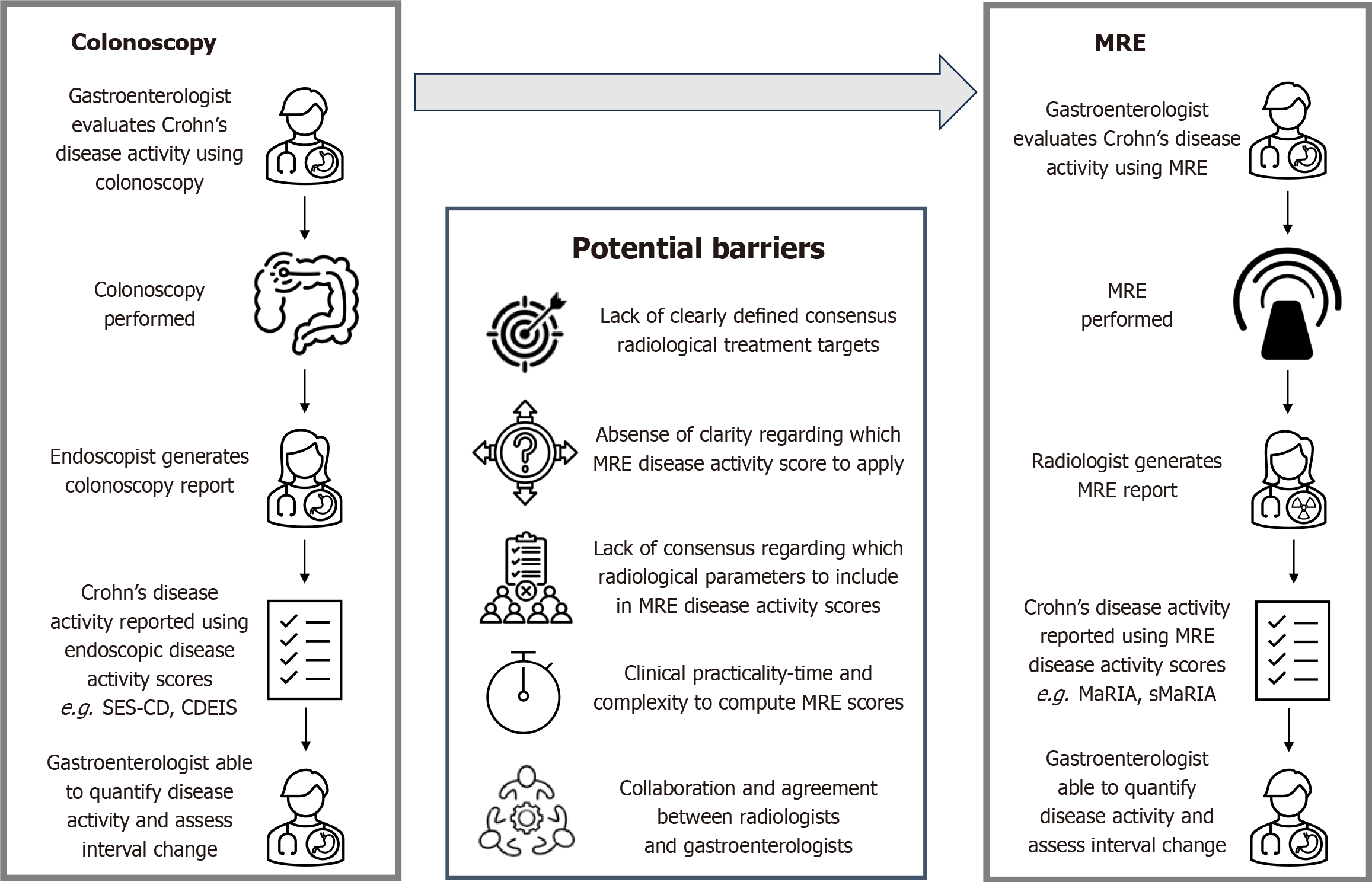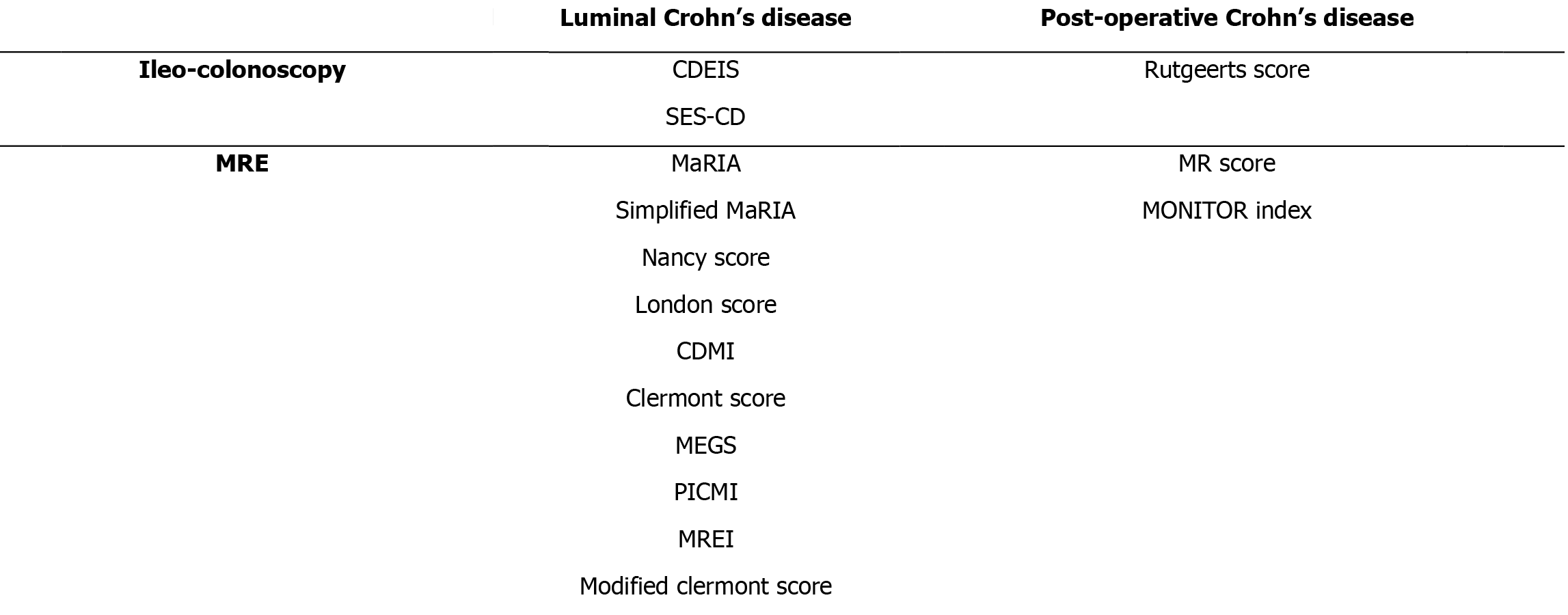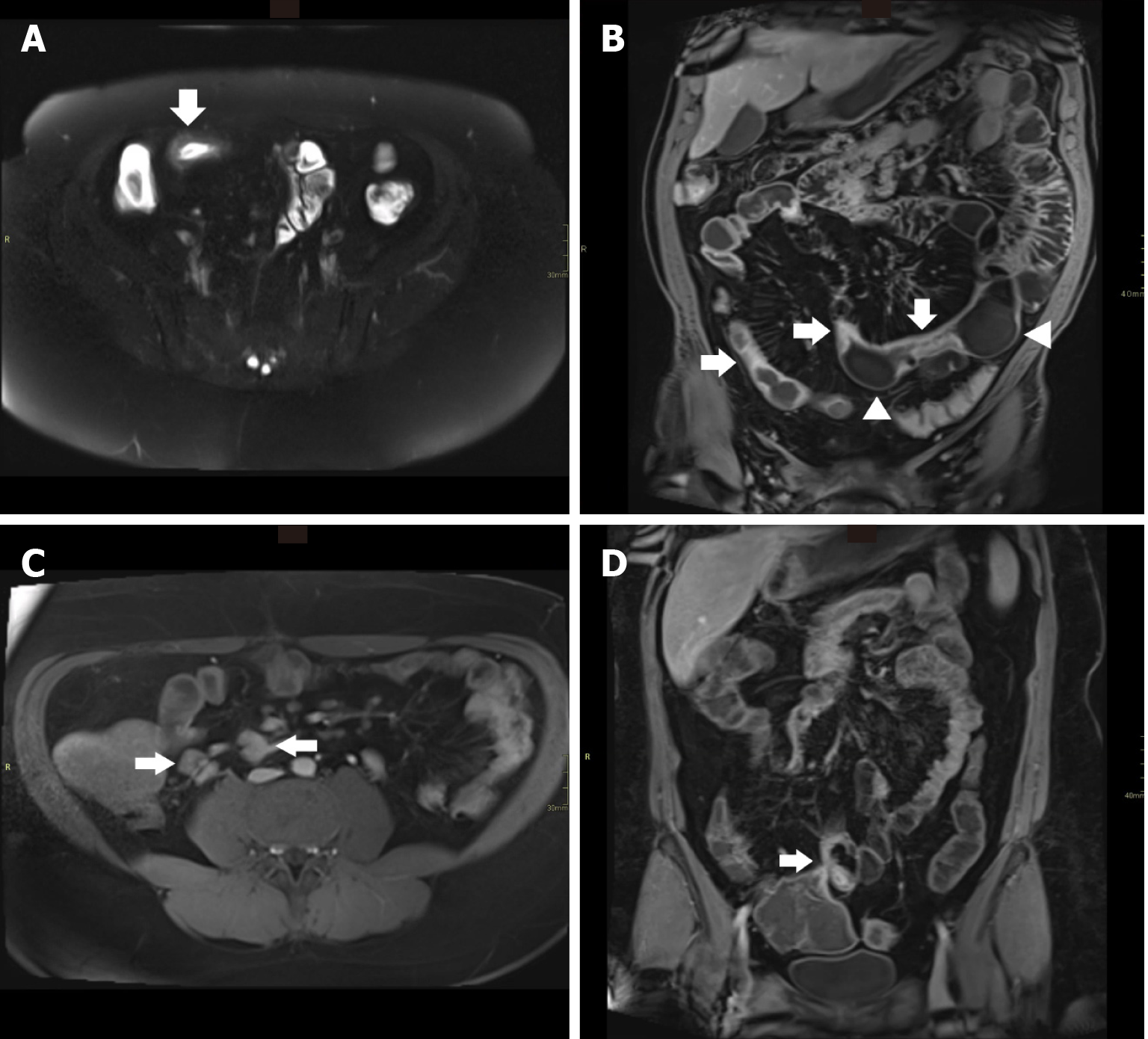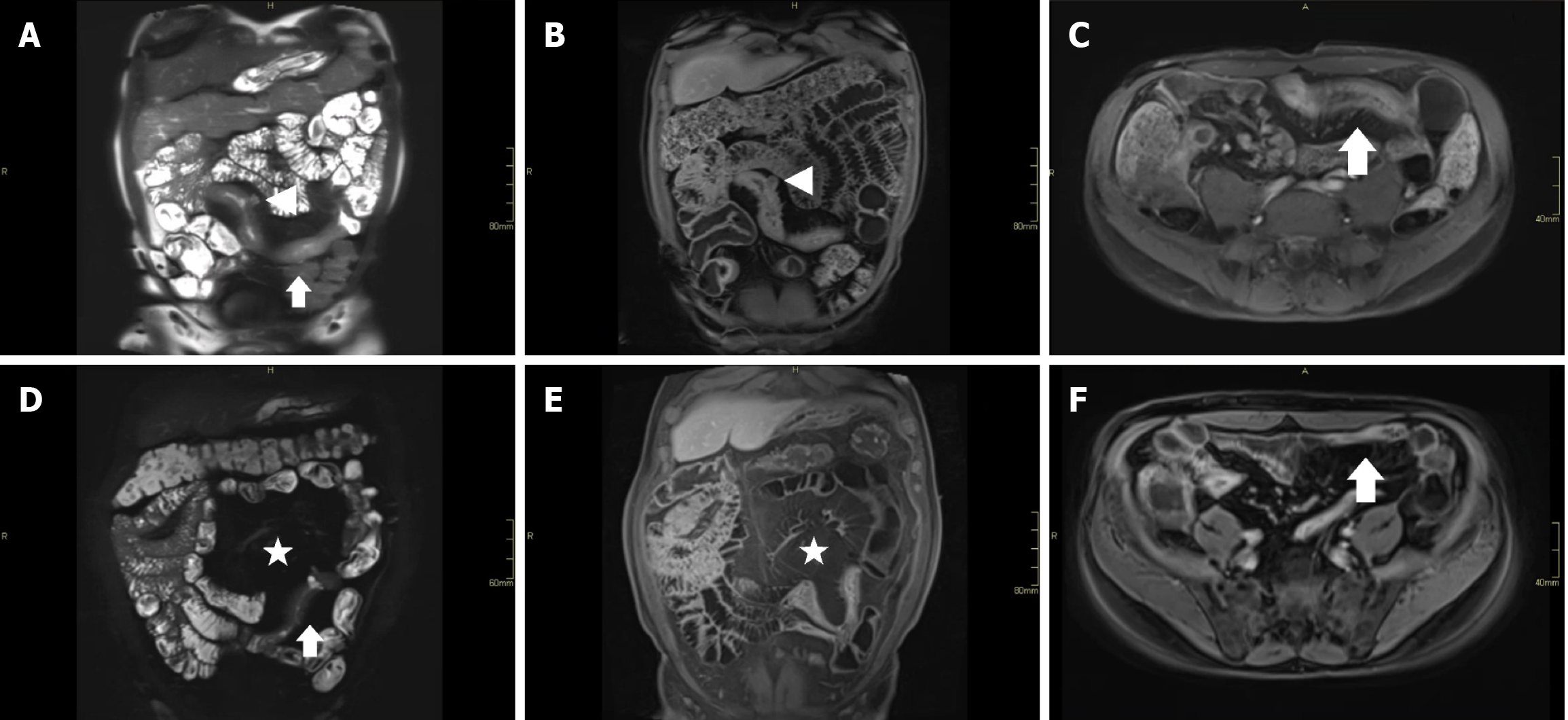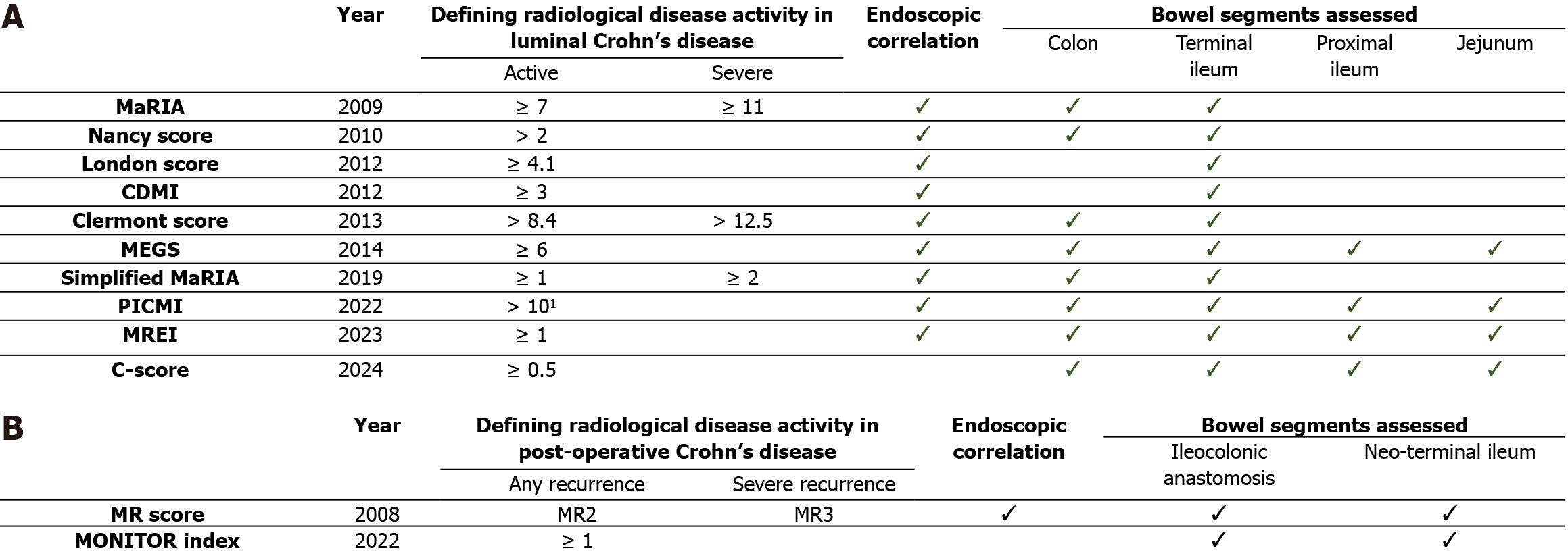Copyright
©The Author(s) 2025.
World J Gastroenterol. Jul 14, 2025; 31(26): 107419
Published online Jul 14, 2025. doi: 10.3748/wjg.v31.i26.107419
Published online Jul 14, 2025. doi: 10.3748/wjg.v31.i26.107419
Figure 1 Applying the principles of endoscopic disease activity scores to magnetic resonance enterography in Crohn’s disease.
MRE: Magnetic resonance enterography; CDEIS: Crohn’s disease endoscopic index of severity; SES-CD: Simple endoscopic score for Crohn’s disease; MaRIA: Magnetic resonance index of activity; sMaRIA: Simplified magnetic resonance index of activity.
Figure 2 Endoscopic and radiological disease activity scores in luminal and post-operative Crohn’s disease.
MRE: Magnetic resonance enterography; CDEIS: Crohn’s disease endoscopic index of severity; SES-CD: Simple endoscopic score for Crohn’s disease; MaRIA: Magnetic resonance index of activity; CDMI: Crohn’s disease magnetic resonance imaging index; MEGS: Magnetic resonance enterography global score; PICMI: Paediatric inflammatory Crohn’s magnetic resonance enterography index; MREI: Magnetic resonance enterography index; MR: Magnetic resonance; MONITOR: Magnetic resonance imaging in Crohn’s disease to predict postoperative recurrence.
Figure 3 Radiological findings of Crohn’s disease on magnetic resonance enterography.
A: Mural thickening and oedema of the terminal ileum on T2 sequence; B: Small bowel stricture associated and mural thickening (arrows) with pre-stenotic dilatation (arrowheads) on post-contrast T1 sequence; C: Mesenteric lymphadenopathy on post-contrast T1 sequence; D: Small bowel fistula to the caecum on post-contrast T1.
Figure 4 Application of magnetic resonance index of activity and simplified magnetic resonance index of activity scores in luminal Crohn’s disease.
A-C: Baseline magnetic resonance enterography (MRE): Magnetic resonance index of activity (MaRIA) = 21.2, simplified MaRIA = 5; Baseline MRE shows mid small bowel wall thickening (arrows in A and C), mural oedema (arrows in A), transmural ulceration (arrowheads in A and B) and hyperenhancement (arrows in C); D-F: Follow-up MRE: MaRIA = 16.5, simplified MaRIA = 2; Follow-up MRE shows creeping fat (star in D and E) and reduced wall thickening (arrows in D and F). MRE sequences: A and D: Coronal T2 fat-suppressed; B and E: Coronal post contrast T1 fat-suppressed; C and F: Axial post contrast T1 fat-suppressed.
Figure 5 Summary of radiological disease activity scores.
A: Luminal Crohn’s disease; B: Post-operative Crohn’s disease. MaRIA: Magnetic resonance index of activity; MEGS: Magnetic resonance enterography global score; CDMI: Crohn’s disease magnetic resonance imaging index; PICMI: Paediatric inflammatory Crohn’s magnetic resonance enterography index; MREI: Magnetic resonance enterography index; MR: Magnetic resonance; MONITOR: Magnetic resonance imaging in Crohn’s disease to predict postoperative recurrence.
- Citation: Lo RW, Bhatnagar G, Kutaiba N, Srinivasan AR. Evaluating luminal and post-operative Crohn’s disease activity on magnetic resonance enterography: A review of radiological disease activity scores. World J Gastroenterol 2025; 31(26): 107419
- URL: https://www.wjgnet.com/1007-9327/full/v31/i26/107419.htm
- DOI: https://dx.doi.org/10.3748/wjg.v31.i26.107419









